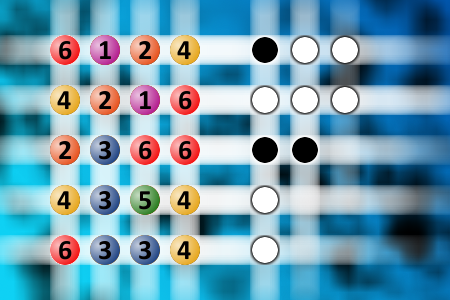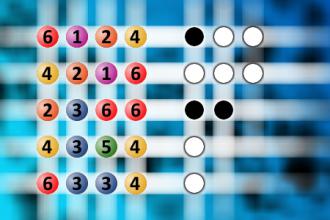Which is a winning combination of digits?
The computer chose a secret code (sequence of 4 digits from 1 to 6). Your goal is to find that code. Black circles indicate the number of hits on the right spot. White circles indicate the number of hits on the wrong spot.Correct answers: 23
The first user who solved this task is Nasrin 24 T.
#brainteasers #mastermind

All About Adam
Wandering dejectedly in The Garden of Eden, Eve told God, "I'm lonely I'm tired of eating apples by myself."
"Okay," God said, "I'll create a man for you."
Eve said, "A man! What's that?"
"He's a creature with aggressive tendencies and an enormous ego. He won't listen very well, he'll get lost easily, but never stop to ask for directions. However, he is big and strong, he can open jars and hunt animals. And he'll be fun in bed."
"Sounds great!" said Eve.
"Oh, and one more thing," God said. "He will want to believe that I made HIM first."
"Okay," God said, "I'll create a man for you."
Eve said, "A man! What's that?"
"He's a creature with aggressive tendencies and an enormous ego. He won't listen very well, he'll get lost easily, but never stop to ask for directions. However, he is big and strong, he can open jars and hunt animals. And he'll be fun in bed."
"Sounds great!" said Eve.
"Oh, and one more thing," God said. "He will want to believe that I made HIM first."

